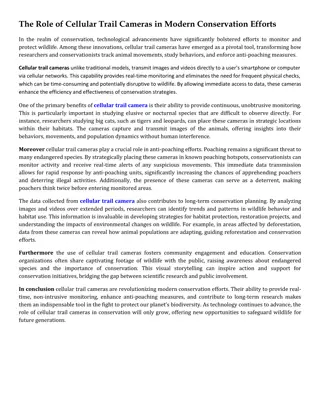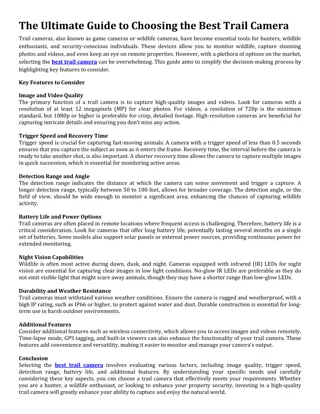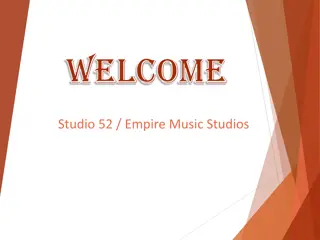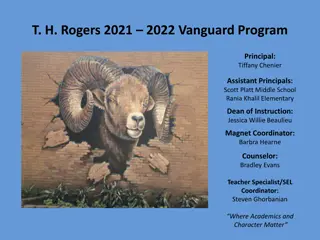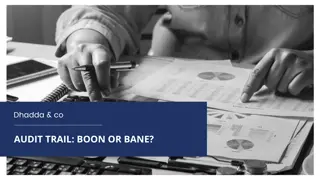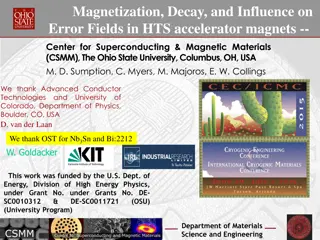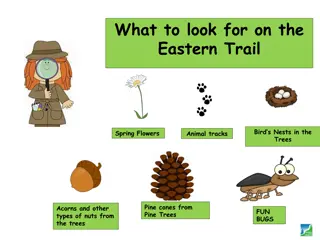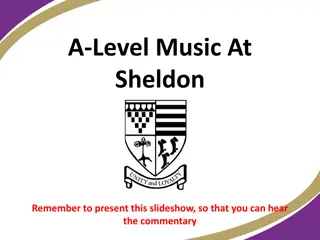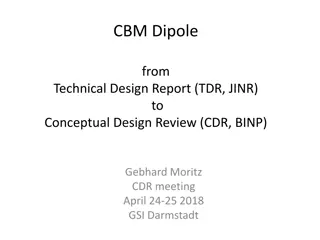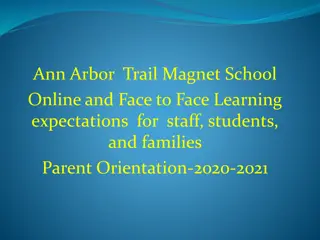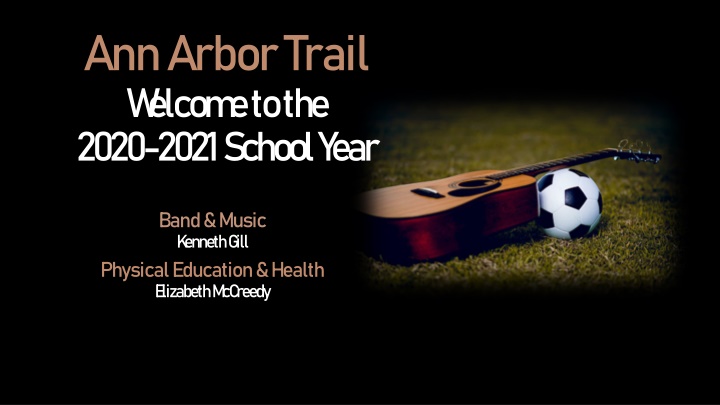
In-depth Overview of DPSCD Music Curriculum from Kindergarten to Grade 3
Explore the detailed DPSCD music curriculum, covering various modules from kindergarten to grade 3. The curriculum includes a focus on diverse cultures, musical concepts, instrument exploration, performance skills, and music composition. Engage in interactive music learning experiences tailored to different grade levels.
Download Presentation

Please find below an Image/Link to download the presentation.
The content on the website is provided AS IS for your information and personal use only. It may not be sold, licensed, or shared on other websites without obtaining consent from the author. If you encounter any issues during the download, it is possible that the publisher has removed the file from their server.
You are allowed to download the files provided on this website for personal or commercial use, subject to the condition that they are used lawfully. All files are the property of their respective owners.
The content on the website is provided AS IS for your information and personal use only. It may not be sold, licensed, or shared on other websites without obtaining consent from the author.
E N D
Presentation Transcript
Ann Arbor Trail W elcom e to the 2020-2021 School Year Band & Music K enneth G ill Physical Education & Health E lizabeth M cC reedy
Ann Arbor Trail Magnet School Band & Music Kenneth Gill kenneth.gill@detroitk12.org
Music Program Overview General Music Grades K - 8th Band Grades 4th - 8th Vocal Ensemble Grades 4th - 8th
DPSCD Music Curriculum Kindergarten Module 1 Memorize Songs from Diverse Cultures Module 2 Memorize Songs from Diverse Cultures - 2 Module 3 Pitch & Dynamics Module 4 Tempo & Duration Module 5 Rhythmic Instruments Module 6 Melodic Instruments Module 7 Respond With Body Movements Module 8 Willingness To Participate
DPSCD Music Curriculum Grade 1 Module 1 Tone Quality And Range Module 2 Dynamics And Pitch Module 3 Maintaining Steady Beat Module 4 Fast, Slow, Short, And Long Module 5 Musical Concepts For A Purpose Module 6 Expressive Qualities Module 7 Songs From Various Cultures Module 8 Instruments of Various Cultures
DPSCD Music Curriculum Grade 2 Module 1 Music In Everyday Life Module 2 Perform Individually And Collectively Module 3 Perform Individually And Collectively - 2 Module 4 Interpret Basic Music Terms And Symbols Module 5 Perform Individually And Collectively - 3 Module 6 Interpret Basic Music Terms And Symbols - 2 Module 7 Perform Drama And Pantomime To Music Module 8 Feelings And Moods Expressed Through Music
DPSCD Music Curriculum Grade 3 Module 1 Rounds And Pattern Songs Module 2 Form And Structure For Performance Module 3 Simple Sight-Reading Skills Module 4 Dynamics, Tempo And Articulation In Performance Module 5 Various Types Of Music Are Used For Various Occasions Module 6 Music Connects To And Is Influenced By Special Interests, Experiences, Or Purposes Module 7 Create (Compose) Music Using Technology Module 8 Present Original Composition To Others. Describe Connection To Express Intent
DPSCD Music Curriculum Grade 4 Module 1 Musical Elements Are Used In Music From Various Cultures Module 2 Perform Simple Parts Songs Module 3 Recognize Characteristics Of Different Types Of Music Module 4 Visually And Aurally Identify Orchestral Instruments Module 5 Perform Individual Instrument Parts With Others Sing/Play Contrasting Parts Module 6 Music From Various Cultures - 2 Module 7 Perform Simple Part Songs - 2 Module 8 Recognize Characteristics Of Different Types Of Music
DPSCD Music Curriculum Grade 5 Module 1 Differences And Similarities Between Culturally Diverse Music Module 2 Perform Counter-Melodies And Simple Part Songs Module 3 Interpret And Utilize Basic Music Terms And Symbols Module 4 Forms In Various Musical Selections Module 5 Evaluate Musical Works Citing Evidence Using The Elements Of Music Module 6 Demonstrate Understanding Of The Structure And Elements Of Music Performance Module 7 Read And Identify Standard Symbols For Musical Elements Module 8 Demonstrate Musical Ideas, Expressing Content And Connection To Purpose And Context
DPSCD Music Curriculum Grade 6 Module 1 Compare And Contrast Music From Various Periods And Cultures Module 2 Explain How The Structure And Elements Of Music Are Used In Performances Module 3 Sing Two, Three And/or Four-Part Harmony Module 4 Sing Simple Rhythmic, Melodic, And Harmonic Phrases Within AB And ABA Forms Module 5 Sing Harmonic Patterns On Chords I, IV, And V7 Module 6 Play On Melody Bells Or Recorders Chords I, IV, V7 Module 7 Compose Music Using Technology Module 8 Evaluate Your Work Applying Criteria
DPSCD Music Curriculum Grade 7 Module 1 Identify Instruments From Various Cultures And Ethnicities Module 2 Relationship Between Music And The Arts, Other Disciplines, Contexts, And Daily Life Module 3 Perform And Compose Music In Duple And Triple Meter Module 4 Perform And Compose Music In Duple And Triple Meter - 2 Module 5 Perform Using Melodic Devices That Help Organize Musical Ideas Module 6 Playing By Ear Simple Melodies On A Melodic Instrument Module 7 Identify Musical Elements - Melody And Harmony Module 8 Identify Musical Elements Rhythm And Tone Color
DPSCD Music Curriculum Grade 8 Module 1 Identify Instruments From Various Cultures And Ethnicities Module 2 Relationship Between Music And The Arts, Other Disciplines, Contexts, And Daily Life Module 3 Perform And Compose Music In Duple And Triple Meter Module 4 Perform And Compose Music In Duple And Triple Meter - 2 Module 5 Perform Using Melodic Devices That Help Organize Musical Ideas Module 6 Playing By Ear Simple Melodies On A Melodic Instrument Module 7 Identify Musical Elements - Melody And Harmony Module 8 Identify Musical Elements - Rhythm And Tone Color
Instrument Accessories Needed Flute, Clarinet, Alto Sax and Tenor Sax Reeds (Except Flute), Mouthpiece, Neck Strap, Cork Grease, Cleaning Cloth French Horn, Trumpet, Trombone, Baritone Horn, Tuba Mouthpiece, Valve/Slide Oil, Tuning Slide Grease, Polishing Cloth Drums And Percussion Drumsticks, Drum Pad, Mallets
Mr. Gill 8th Monday, Tuesday + Friday (Band) 7th Wednesday, Thursday + Friday (Band) 7:40 - 8:32 6th Monday, Tuesday + Friday (Band) 8:34 - 9:24 2nd Grade Tuesday and Thursday 9:40 - 10:20 Lunch 10:20 - 11:10 Office Hours Monday and Wednesday 11:10 - 12:00 Kindergarten Monday and Wednesday + Friday A Week 1st Tuesday and Thursday + Friday B Week 12:00 - 12:45 3rd Tuesday and Thursday 4th Monday and Wednesday + Friday (Band) 12:45 - 1:30 5th Monday and Wednesday + Friday (Band) 1:45 - 2:30
Platforms, Apps & Technology Microsoft Teams Schoology Tik Tok Acapella Zoom Adobe Premiere Adobe Audition iPhone Voice Recorder iRig Interface Focusrite Scarlett Solo Interface iPad iPhone
Ann Arbor Trail Magnet School Physical Education and Health Elizabeth McCreedy elizabeth.mccreedy@detroitk12.org
Physical E ducation and H ealth Virtual Classroom Rules Attend every class: Arrive to class on time and stay for the entire class. Dress appropriately: Show up properly dressed for class in a T- shirt and shorts or sweats. Be prepared to participate: Participate in all activities and complete all assignments. Be respectful of others: Be respectful of your fellow students and your teacher. Remember everyone is here to learn.
Physical E ducation and H ealth Expectations for Behavior in Class Pay attention in class. You shouldn t have a cell phone out or TV on in the background. Raise your hand (by clicking on the hand in the middle of the screen) to be called on before speaking. Wait for teacher to call on you. The teacher will mute all students unless they are called upon. Do not unmute yourself.
Physical E ducation and H ealth Setting Up a Learning Space Physical Education Have enough room to move: The space should be large enough to physically move around in (at least 6 feet by 6 feet). Provide a soft space for exercises: Students should have something soft to do floor exercises on, such as carpet or a yoga mat. Health Make a space for focused learning: Students need a comfortable place to learn on their computers & tablets that is as free from distractions as possible.
Physical E ducation and H ealth Physical Education Learning Objectives Stretching/warmups Locomotor skills Non-Locomotor skills Aerobic exercise Anaerobic exercise Yoga Dance
Physical E ducation and H ealth Health Learning Objectives Safety Hygiene Substance Abuse Nutrition Physical activity
Physical E ducation and H ealth Class Schedule 7th (Monday & Tuesday) 8th (Wednesday & Thursday) 7th & 8th (Friday Health & Nutrition) 7:40 8:32 AM 6th (Wednesday & Thursday) 6th (Friday - Health/Nutrition) 8:34 9:24 AM 2nd (Monday & Wednesday) 2nd (Friday Health/Nutrition) 9:40 10:20 AM 11:10 12:00 PM Lunch 12:00 12:45 PM Kindergarten (Tuesday & Thursday) 1st (Monday & Wednesday) Kindergarten & 1st (Friday Health & Nutrition) 3rd (Monday & Wednesday) 4th (Tuesday & Thursday) 3rd & 4th (Friday Health & Nutrition) 12:45 1:30 PM 5th (Monday & Wednesday) 5th (Friday Health & Nutrition) 1:45 2:30PM



